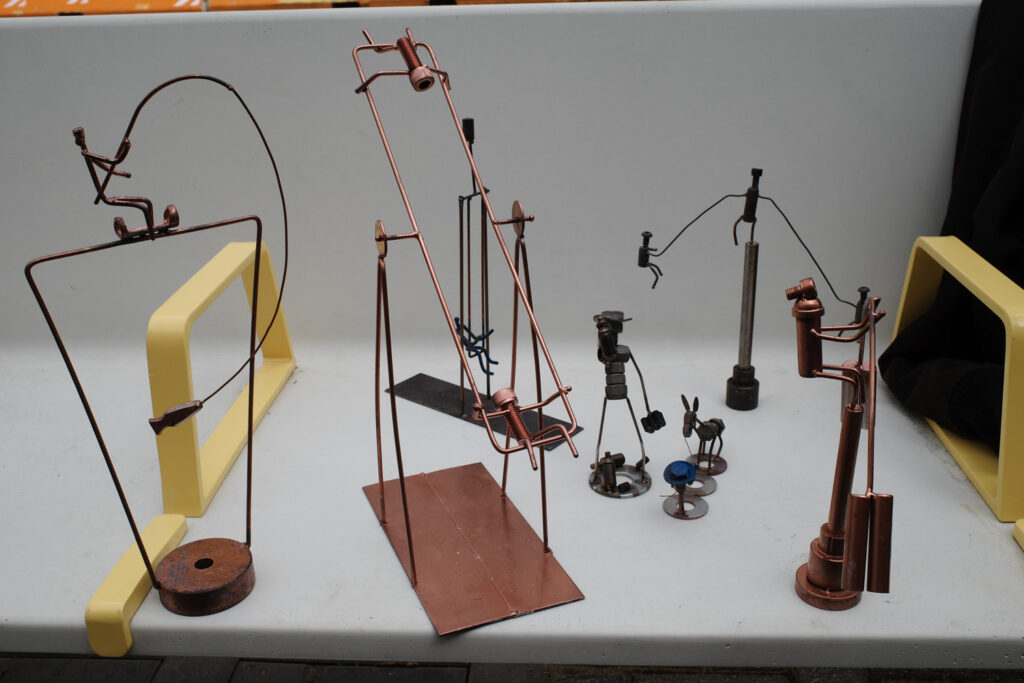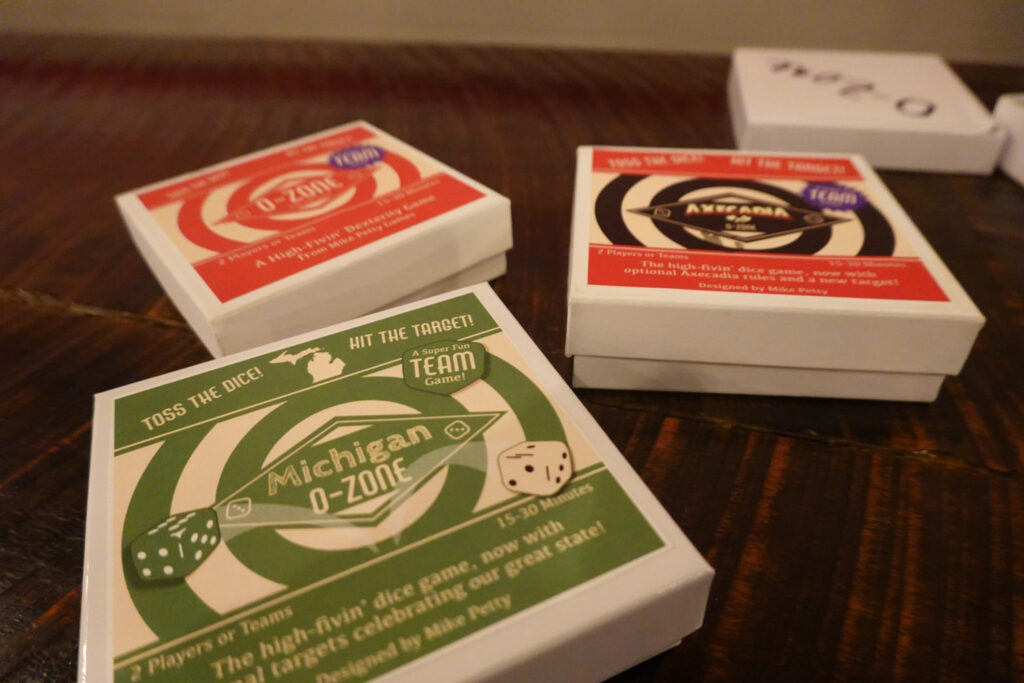Took a visit to the Grand Rapids Art Museum last month and found some genuinely incredible art. Not in the museum, though, hell no—sitting right outside on a park bench.
I was on assignment for another Enjoyer piece to cover the GRAM’s DEI acquisition initiative. Wasn’t sure what I’d find, but was delighted to see the Pride and BLM flags hanging right outside its window for an easy photo op. Boy, they make my job real easy sometimes.
I wandered through the museum listlessly, mostly uninspired. Never been a big fan of their collection, apart from a few notable pieces and the mid-century modern furniture exhibition. The nicest thing they have is the building, sort of brutalist concrete and glass on the outside but spacious and modern on the inside. The perfect place for curatorial angst to play out as they strive to fill up the space with globalist art acquisitions.
What I didn’t anticipate was encountering the best art I’ve seen all year right outside the museum. I was photographing the outside of the building when a man on a bench called out to me. He had a series of small sculptures for sale on the street. Homeless, by the look of him, the sort of man a city slicker is trained to ignore. Most people walking by did, and I certainly intended to at first glance.
His work caught my eye, though. After an afternoon feeling stunningly uninspired, his pieces astounded me. Small welded kinetic sculptures of figures in various scenes: cowboys, surfers, fishermen, parents, and children. I’d never seen anything quite like them—subtle metal forms perfectly balanced, twirling and moving around, each in a different way befitting the subject.

I got talking to the man, who told me his name was Tarzan. A fitting nom de plume for the maker of work that swings so fluidly. He told me he was homeless and lived most nights at the mission around the corner. I asked about his work. Where did he get the metal for the sculptures? How on earth was he welding them all together?
He retrieves scrap from small metal shops and other small businesses. He uses a small electric tig welder in the park in the middle of the night, plugging it into a street lamp. I asked him to show me, but he said it wasn’t with him, he kept it hidden away at the mission. A precious item, no doubt.
He asked for a smoke, and I was curious to know more, so I went and bought a pack, took one for myself and gave him the pack. We smoked together while he told me his story. He’d been a factory worker, a welder. The factory closed, he couldn’t find work, he became an alcoholic and ended up on the streets. Drifted for a time through California, came back to Grand Rapids, and has been living at the mission and making sculptures.
If he doesn’t sell a big piece every day, he always sells a two-dollar cross—these small crosses welded together from two nails. I bought two pieces from him—one, a static metal sculpture of a cowboy riding a horse. The other, a kinetic sculpture of what I took to be a father swinging around his two children. It sits atop a metal pole, and you can spin it with your hand. The father carefully balances atop a pole, spinning around chaotically, his children hanging onto his arms.

These were his dreams, manifestations of happiness beyond present circumstances. The wild-eyed cowboy, the surfer, the fisherman, the father. He had no interest in making art about self-pity or adversity or his own predicament. What he does is far more interesting; he reaches beyond it. His work aspires toward happiness and childlike joy. Some would read it as kitsch, I’m sure the “serious” curators pass by it every day with that lens. Sincerity is out of fashion, so are aspirations, they only want art about suffering.
Who makes art about suffering? Those for whom it’s a novelty. Who makes art about joy? Those for whom it’s a necessity.
The contrast of the man, his circumstances, with the joy in his work left me profoundly sad. The father spinning his children around—a dream never accomplished, or failed at; the surfer riding a wave—things he never did, or can no longer do. Every time I spin that sculpture around it reminds me of fate, how things never go quite how we intend. Can’t expect museum curators, academic strivers at the pinnacle of success in a very narrow world, to really understand that.

They only see what they want to see, parsed through the artworld lingo they’ve been trained to speak. They’ll talk your ear off about adversity, even using that as a rationale for bizarre international art acquisitions for a museum in Grand Rapids, Michigan. Yet they’ll never see what’s right in front of them, literally—this man making art in the most adverse conditions possible, reflecting that struggle in a profound way beyond simply glorifying his own suffering. They dismiss him because he doesn’t fit.
Tarzan has another series too. These little metal robots, designed as phone folders you can prop your phone in. As functional pieces, I didn’t quite get them, but then I realized what they really are—sculptures of the people who ignore him on the streets. Little metal robots, holding their phones, in their own little worlds. This is my interpretation, I doubt he’d say as much.

There’s a reason he parks himself on a bench outside the museum, of course. He wants in, he wants acceptance, acknowledgement. At the very least, it’s the most likely place to find art collectors in Grand Rapids. He sits outside looking in the windows, alienated, and he can’t help wanting to be there. Certainly, not all artists can be in the museums. There isn’t enough room, and not all of their work warrants such accolades. But his situation mirrors the fate of many artists who, for whatever reason, don’t fit within the DEI mold.
Diversity is conformity, in the end; if you don’t fit its narrow vision, you’ll never get anywhere in the institutional scene. Better to hawk your wares on the street, literally or metaphorically, you’ll go farther. Maybe other ostracized artists (ahem ahem) might buy a piece or two. Repeat this enough times, and maybe it becomes a museum of its own.
Bobby Mars is an artist, alter ego, and former art professor. Follow him on X at @bobby_on_mars.



